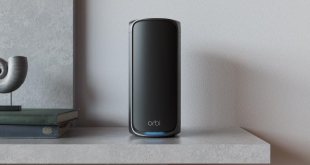
Netgear ships the Powerline Music Extender in a small box which houses plenty of information regarding the product.

Turning to the package's rear side reveals diagrams outlining exactly how the Powerline Music Extender kit can be used.
Warranty leaflets, an installation guide, and the software CD form the XAUB2511 kit's documentation bundle. The installation guide is excellent; each process is very clearly outlined in well-written English and accompanying images.
Two Ethernet cables and the USB-to-audio lead also contribute to the bundled items. Breaking out from the USB connector are left and right stereo audio connections and a 3.5mm jack. The selection of audio connectors gives the Powerline Music Extender a high level of flexibility.
The two 200Mb/s-capable devices look like typical powerline adapters. A plug socket on each of the devices allows them to pass-through the electrical power. And with a 13A fuse fitted on each adapter, there is no need to worry about over-loading the electrical socket.
Netgear's smaller – XAV1601 – powerline adapter connects to a router to transmit an internet connection throughout a home's electrical plug sockets. The larger – XAU2511 – unit acts as the signal-receiving device and also features the USB port that is used to output audio or connect printers and portable hard drives.
The XAV1601 measures in at 105 x 58 x 41mm making it a typically-sized powerline adapter. The larger XAU2511 device's dimensions are 112 x 74 x 45 mm meaning that it is a few millimetres taller than a typical unit.
Two LED indicators on the XAU2511 receiving unit indicate the power status and current connection speed. When the upper (powerline) LED glows green, the devices' link speed is greater than 80Mb/s. Amber indicates a connection speed between 50 and 80Mb/s. A sub-50Mb/s link speed is indicated by a red colour for the powerline LED.
Security and factory reset buttons are located on the XAU2511 unit's left side.
A standard 100Mb/s Ethernet connection is featured on the XAU2511 unit, as well as a USB 2.0 port and power switch. The bundled USB-to-audio cable plugs into the powerline adapter's port to output audio signal to a device. Alternatively, the connection to a printer, portable hard drive or USB memory stick can be transmitted across the powerline, and henceforth household, network.
Netgear's decision to place the connections on the XAU2511 unit's upper edge, and the power socket towards the bottom of the device was a wise one. The unit is unlikely to be incompatible with low-mounted electrical sockets, and physically reaching for the connection area is much easier with the ports located on the top side.
Given the 200Mb/s link speed between each powerline adapter, the choice to use a Fast Ethernet port which is limited to 100Mb/s may seem like an odd one. Netgear has chosen to keep device costs lower by using the Fast Ethernet connection. A transfer rate which is substantially greater than 100Mb/s is also unlikely in real world scenarios, hence a Gigabit Ethernet port would have been wasted expenditure.
A solitary Fast Ethernet connection joins security and factory reset buttons on the XAV1601 unit's underside. Physical clearance may become an issue when using the XAU1601 powerline; the electrical socket is located towards the device's upper edge, meaning that interference with flooring will be encountered when using low-mounted power sockets.
Netgear would have been wise to position the socket on the device's lower edge, and the connections on the upper face. This design would have limited floor-bound interference issues and would have also made accessing the Ethernet port and buttons an easier task.
 KitGuru KitGuru.net – Tech News | Hardware News | Hardware Reviews | IOS | Mobile | Gaming | Graphics Cards
KitGuru KitGuru.net – Tech News | Hardware News | Hardware Reviews | IOS | Mobile | Gaming | Graphics Cards








